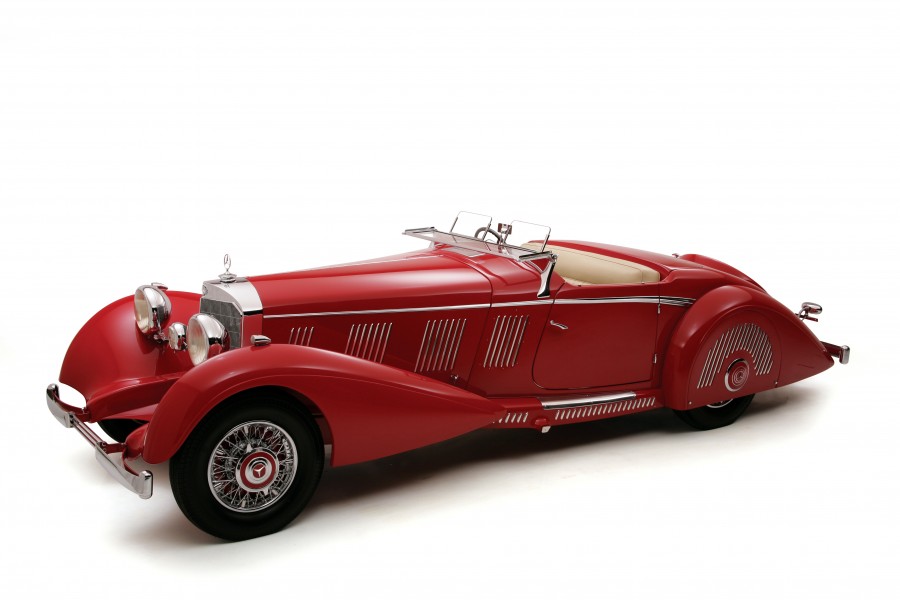SCM Analysis
Detailing
| Vehicle: | 1937 Mercedes-Benz 540K Special Roadster |
| Years Produced: | 1936–40 |
| Number Produced: | 419 |
| Original List Price: | $7,000 |
| SCM Valuation: | $500,000–$6 million |
| Chassis Number Location: | Chassis plate on cowl |
| Engine Number Location: | Stamped on left side of block, plus stamped plate |
| Club Info: | Mercedes Benz Club of America |
| Website: | http://www.mbca.org |
| Alternatives: | 1936–40 Bentley 4 1/4, 1935–39 Delahaye MS, 1935–39 Bugatti Type 57 |
| Investment Grade: | A |
This car sold for $2,530,000 at RM’s Monterey auction on August 18, 2007.
Pre-war German cars and Mercedes-Benz in particular have always had the reputation of being “over-built.” For instance, where the French or Italians would make a little bracket by hand, Mercedes would machine one that far exceeded the limits of the needs it had to meet.
French and Italian cars of the period had a wonderful lightness about them that make them feel much more modern than their German counterparts. But therein lies the trade-off—lightness versus dependability. A Mercedes 540K weighs about 5,500 pounds—nearly 1,000 pounds heavier than its European rivals—and it’s very apparent on the road.
Heavy, but just about bulletproof
It’s a wonderful Autobahn cruiser, but driving over the Italian Alps requires substantial effort. On the other side of the coin, it’s just about bulletproof. So you have two different approaches to the problem, and who’s to say which is better? There are rabid fans in each camp, and many successful collectors have examples of both in their garages.
Redundant systems, self-oiling suspension components, massive door hinges, and stout structural woodwork all add to the feeling of quality, but often at the expense of driveability. A 540K radiator is made up of over 5,000 tubes individually soldered together, and then soldered into a chromed brass shell. It is incredibly complicated and incredibly expensive to restore correctly, and you can expect to pay more than $35,000 to rebuild a 540K radiator today.
Mercedes tended to be a little heavy-handed in their design as well, but most Mercedes aficionados prefer the factory-bodied cars, as opposed to coachbuilt cars. As with most European builders of the period, Mercedes would supply you with what amounted to a running chassis, which you could take to the coachbuilder of your choice to have a car custom-built for you.
Some designs were more successful than others, but almost none approached the level of beauty of the factory-designed Special Roadsters. On top of that, almost everyone outside of England preferred left-hand drive.
The car that sold at RM’s Monterey auction, chassis number 154080, was indeed a Roadster, and it is “Special” in that there’s only one of them, but I think the present term “Special Roadster” is a marketing ploy of today, as it didn’t carry the label in period.
It is noted in the car’s history that it was damaged in a barn fire in Canada in the 1950s. It is not noted how much damage the car suffered or how much, if any, of the body was replaced. This is what we would like to know to help determine its value.
The car presents well and is striking in appearance, but the right-hand drive hurts its value. Two years ago, I don’t think this car would have brought $1.5 million.
It points out today how strong the market is for attractive, well-restored, coachbuilt cars. This sold for $2,530,000, and a similar factory-built Special Roadster is north of $6,000,000. There are literally more potential buyers than there are cars, so I would have to say that in today’s market, this car was well bought.♦
